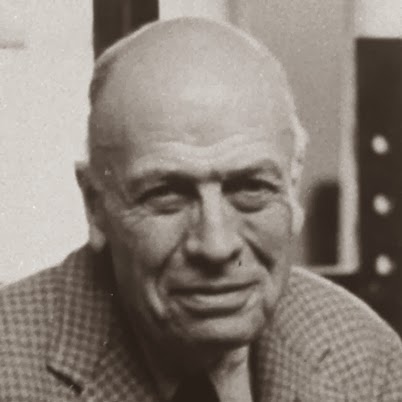Unlikely Friends: Hopper & Burchfield
Edward Hopper (Am. 1882-1967)
Charles Burchfield (Am. 1893-1967)
Burchfield's often over-the-top exuberance is always tempered in each painting by a conscious pulling back. He loved laying down networks of patterned strokes, but he knew just when to stop.
His watercolor below bustles with energy. The three building couldn't look more different. To that he adds conflicting patterns in rippling water, spindly tree branches, and powerlines. Yet how careful he is to include quiet and empty passages in the water and sky.
Burchfield, February Thaw, watercolor, circa 1920
Brooklyn Museum of Art
Without these quieter places where we can rest our eye we would find his paintings overwhelmingly active and would turn away. Who wants to exhaust oneself?
Hopper's more pared down world would be sparse indeed had he not known to throw in a few spots of unexpected complexity. They surprise and delight the eye.
Hopper, Summer Interior, oil, 1909, Whitney Museum
of American Art
Hopper's early oil Summer Interior happens in a notably empty setting. Yet your eye is caught and held by a few strategically places details like the keyhole cut out in his bed board or the stripes on just part of the blanket.
Each in their own way, these painters spent a lifetime searching for just the right balance. It is a tribute to both that each actively admired the other's art despite their obvious stylistic differences.
Often Hopper's work is described as melancholy. It's true that there are paintings that have an emotional heaviness. But for each one of those there are two that dazzle us with some of the most brilliant direct sunlight anyone has ever achieved in oil. Look at the light and air in this one- who wouldn't want to walk into that room?
Hopper, Rooms by the Sea, oil, 1951, Yale University Art Gallery
While Burchfield is often dazzlingly felicitous he's no stranger to imagery that takes a darker turn.
Burchfield, Night Scene, watercolor, 1935, Whitney
Museum of American Art
Both these artists to me capture the full range of our emotional lives, from depressive gloom, to sudden intrigue, to heart-stopping delight. Knowing their work gives us clues to find some equivalents out in the world of what we are experiencing in our inner lives. In a way I believe they make us feel less alone.










